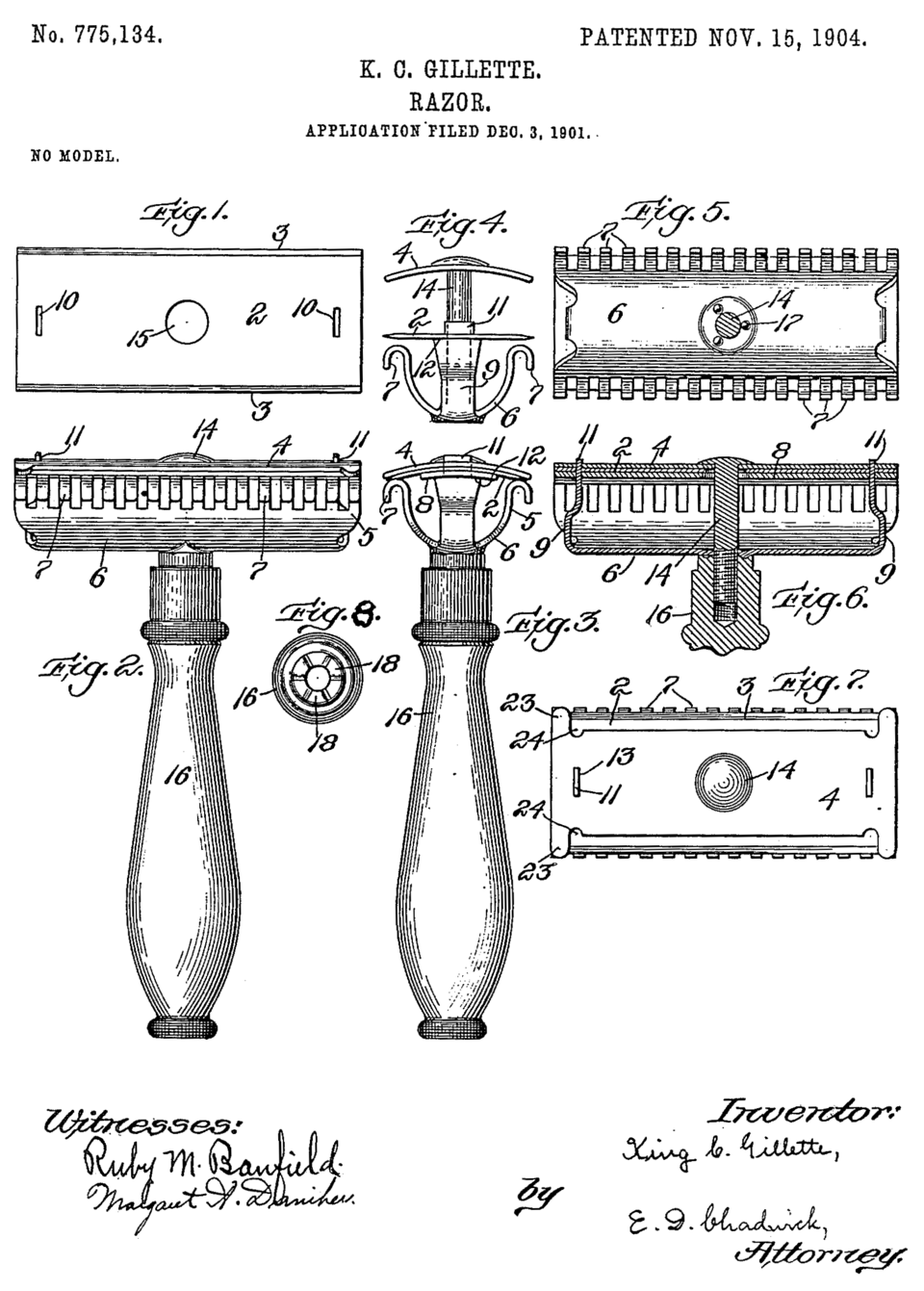The Birth of a Revolutionary Idea
At the dawn of the 20th century, a visionary named King Camp Gillette changed the face of men’s grooming forever—quite literally. In 1901, he filed a patent for an innovation so impactful that it would redefine shaving for generations: the disposable safety razor blade.
Before Gillette’s invention, wet shaving was a ritual best performed by skilled barbers or practiced hands using straight razors—the intimidating “cutthroat” blades that demanded stropping, honing, and expert control. Shaving at home was not only inconvenient but also risky for the untrained.
Gillette, a traveling salesman with a penchant for practical design, imagined something radically new: a razor blade that was thin, sharp, inexpensive, and disposable. Rather than requiring endless maintenance, this blade could be swapped out with ease—a concept virtually unheard of at the time.
The 1901 Patent That Changed the World
On November 15, 1904 (following the original 1901 filing), King Gillette and his partner William Emery Nickerson were awarded U.S. Patent No. 775,134 for their "Safety Razor." This ingenious device consisted of a double-edged, replaceable blade clamped between a handle and a guard, shielding the skin from cuts while delivering a close shave.
What made it revolutionary?
-
Safety: The design reduced the danger inherent in straight razors, opening the door to safe, self-administered shaving.
-
Affordability: The blades could be mass-produced and sold cheaply.
-
Convenience: No stropping, no honing—just pop in a new blade.
Gillette wasn't just inventing a product. He was building a business model based on recurring blade sales—a razor-sharp precursor to today’s subscription services and hardware-as-a-service models.
The Safety Razor Goes to War (and the World)
Gillette’s big break came during World War I. The U.S. military included Gillette safety razors and blades in soldiers’ gear kits, exposing millions of young men to the convenience and effectiveness of the product.
When those soldiers returned home, they brought their shaving habits with them—catapulting Gillette into global household brand status.
By the 1920s, Gillette razors were sold around the world. The company’s marketing was bold and forward-thinking, often depicting a modern man whose clean shave symbolized hygiene, professionalism, and masculinity.
How Gillette's Innovation Shaped Grooming Culture
The cultural ripple effects of Gillette’s invention are difficult to overstate:
-
Daily shaving became the norm for men in many Western societies, especially in the corporate world.
-
Barbershops saw a decline in straight razor shaves as home grooming took precedence.
-
The razor became a rite of passage, with fathers teaching sons how to shave with Gillette blades.
Even competitors who emerged in the decades to follow—Schick, Wilkinson Sword, and others—built upon the blueprint Gillette had forged.
The Legacy Lives On
Over a century later, Gillette’s influence still cuts deep. While cartridge razors and electric shavers have since entered the market, many wet shaving enthusiasts today have returned to the classic double-edge safety razor—valuing the craftsmanship, precision, and sustainability that Gillette’s early designs exemplified.
The original Gillette safety razor stands as a perfect marriage of industrial ingenuity and marketing genius. It's not just a tool—it's a symbol of how innovation, when paired with foresight, can reshape daily life across the globe

